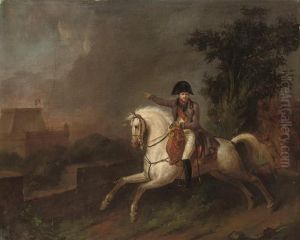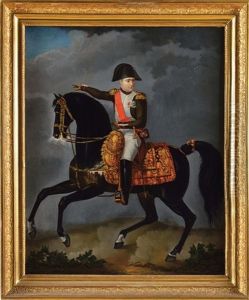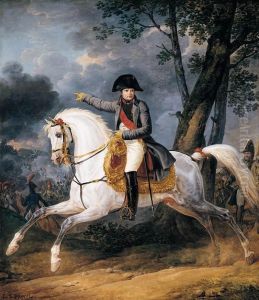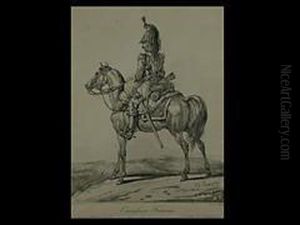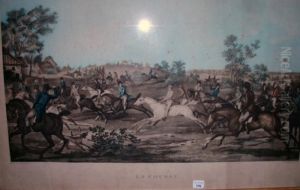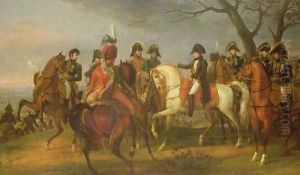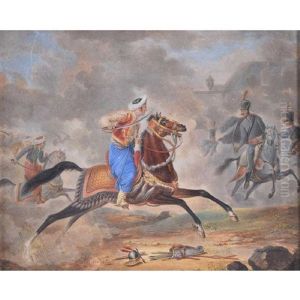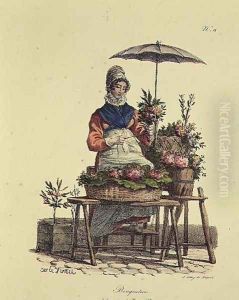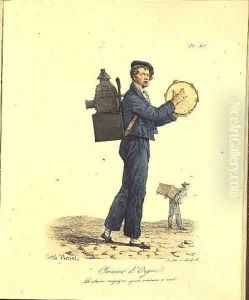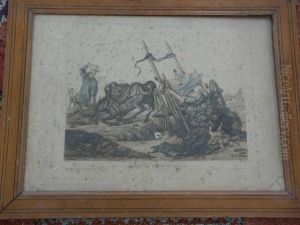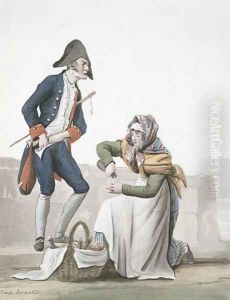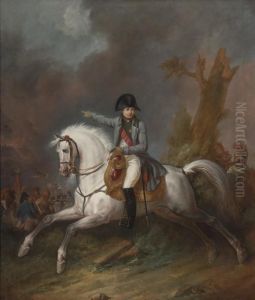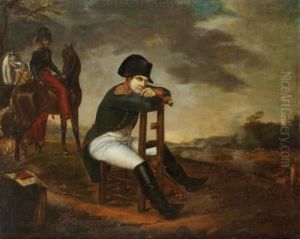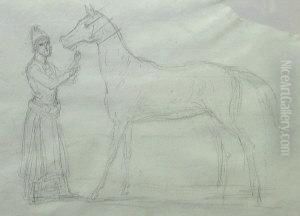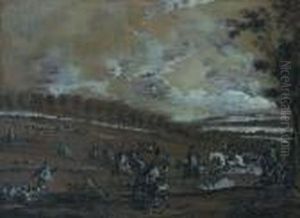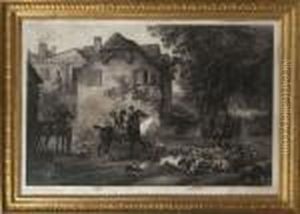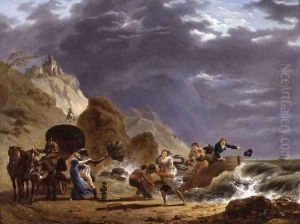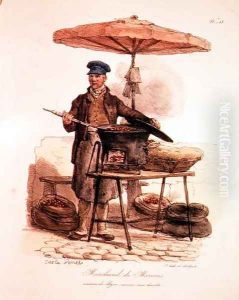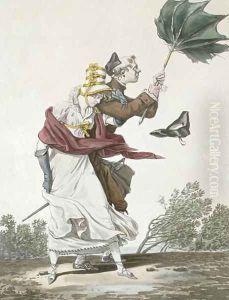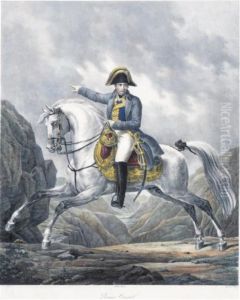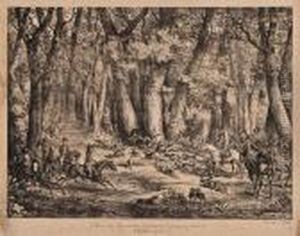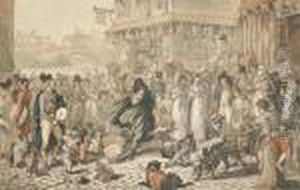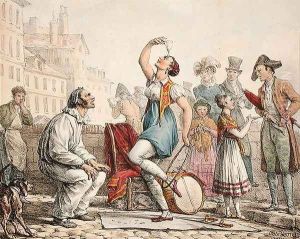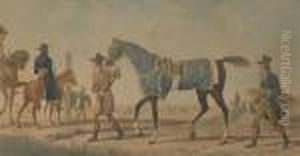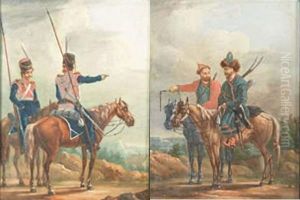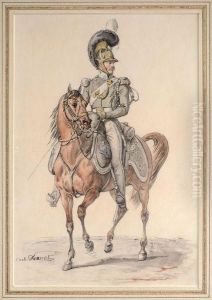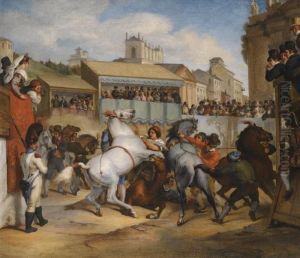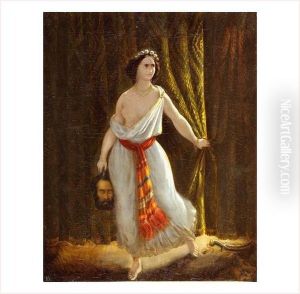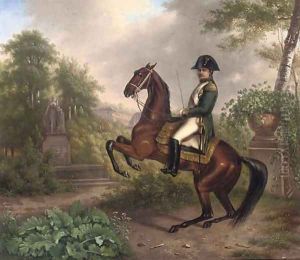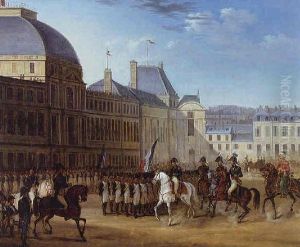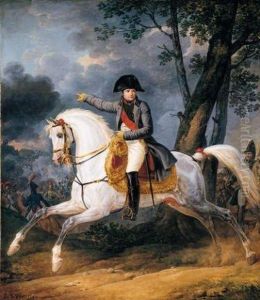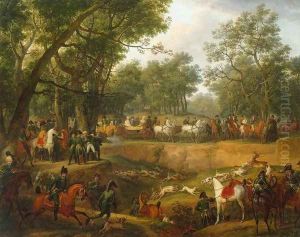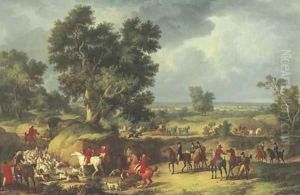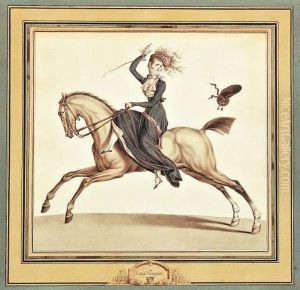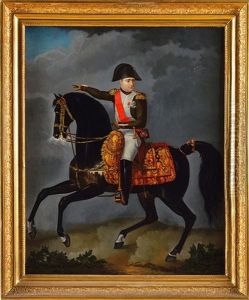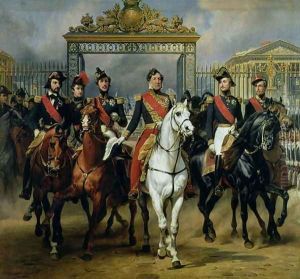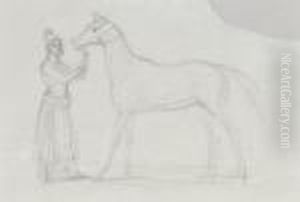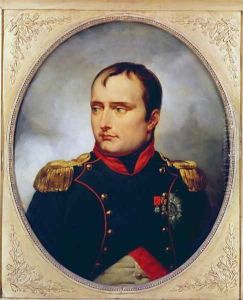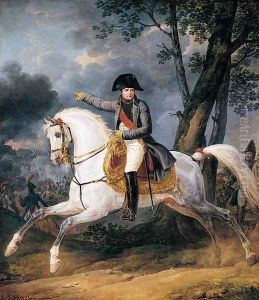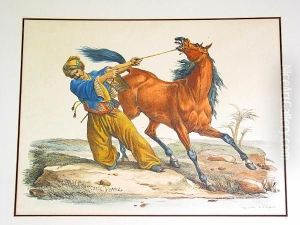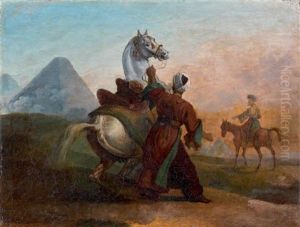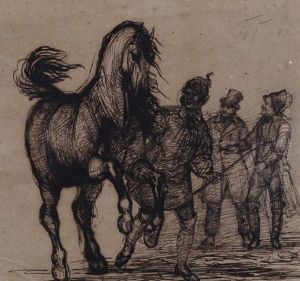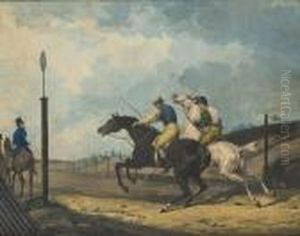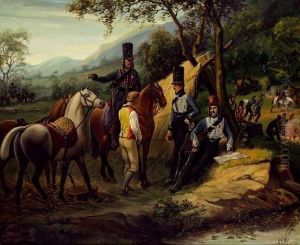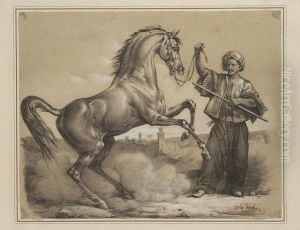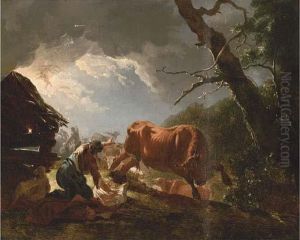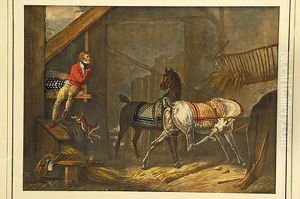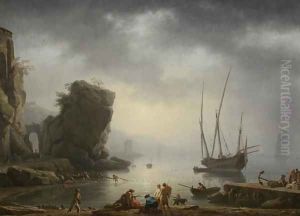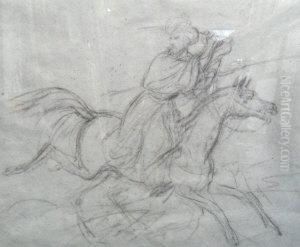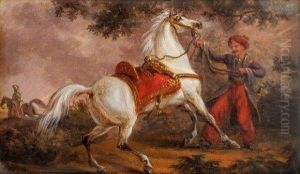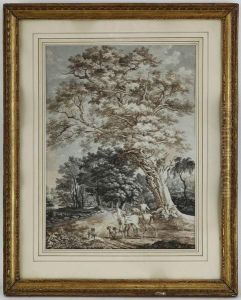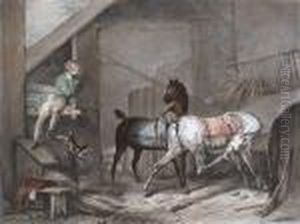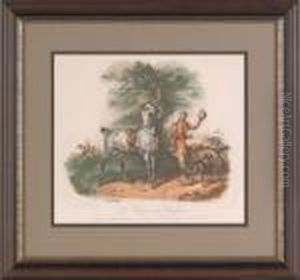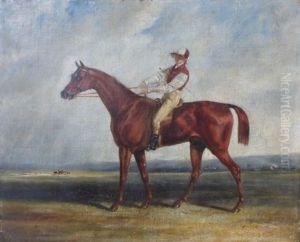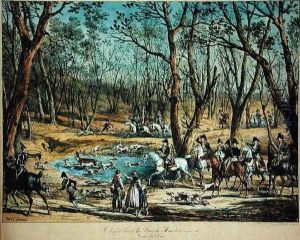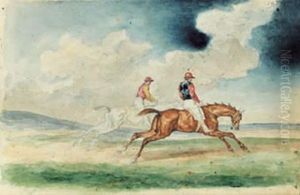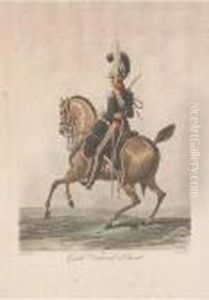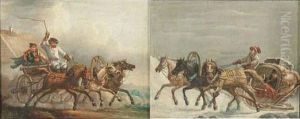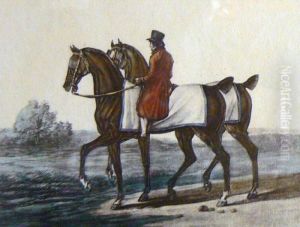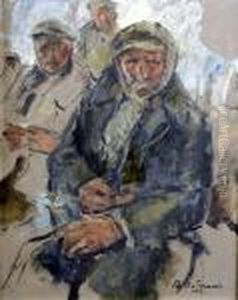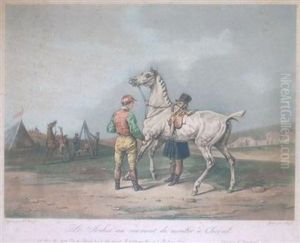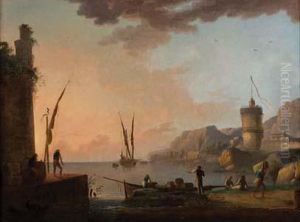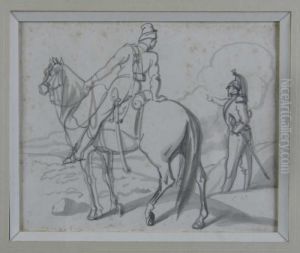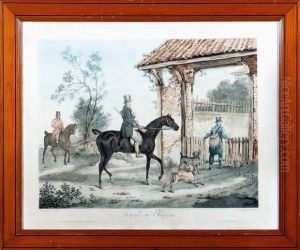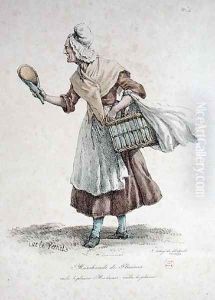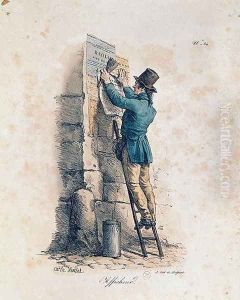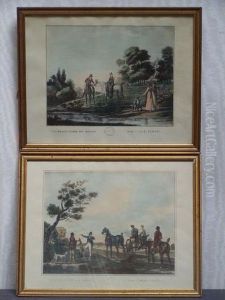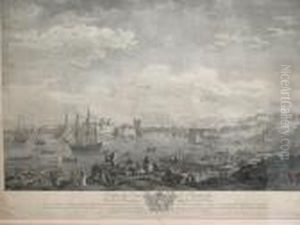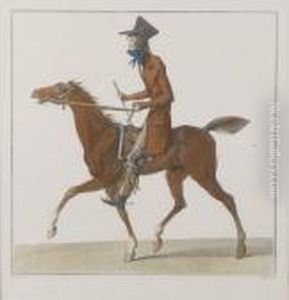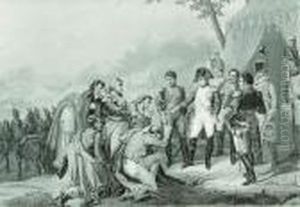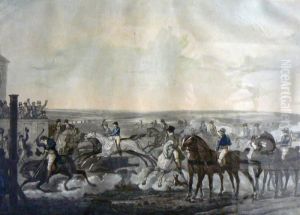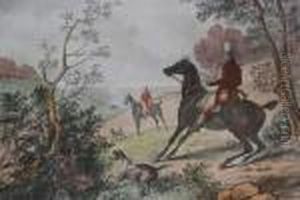Carle Vernet Paintings
Antoine Charles Horace Vernet, better known as Carle Vernet, was a French painter, born on August 14, 1758, in Bordeaux, France. He was the son of Claude Joseph Vernet, a painter famous for his landscapes and marine subjects. Under the tutelage of his father, Carle developed a strong foundation in art and showed a particular interest in depicting animals, especially horses, which would become a hallmark of his work.
Carle Vernet received academic training at the French Academy in Rome and was influenced by the Neoclassical style. However, he is often remembered for his departure from the formalism of Neoclassicism, developing a more personal and dynamic approach. His career flourished under the patronage of the French monarchy, and he won the prestigious Prix de Rome in 1782.
Throughout the political upheavals of his time, including the French Revolution and the Napoleonic era, Vernet managed to maintain his status and continued to receive commissions. His works during this period often reflected contemporary events, particularly the military campaigns of Napoleon Bonaparte. Vernet became known for his battle scenes, and his ability to capture the movement and fervor of warfare earned him considerable fame.
In addition to his battle scenes, Vernet was also renowned for his depictions of the hunt and racecourses. His works are characterized by their dynamic compositions, attention to detail, and ability to convey the energy of the subjects he portrayed. His skill in rendering the anatomy of horses and the liveliness of his hunting scenes made him popular among the European aristocracy.
After the fall of Napoleon, Vernet continued to work, but his popularity waned as tastes changed and Romanticism became the dominant style in French art. Nevertheless, his legacy lived on through his son, Horace Vernet, who also became a famous painter of military subjects.
Carle Vernet passed away on November 17, 1836, in Paris, leaving behind a body of work that remains appreciated for its historical value and its artistic representation of an era marked by great turmoil and change. Today, his works can be found in various museums and collections around the world, preserving the legacy of a man who captured the spirit of his time with brush and canvas.
